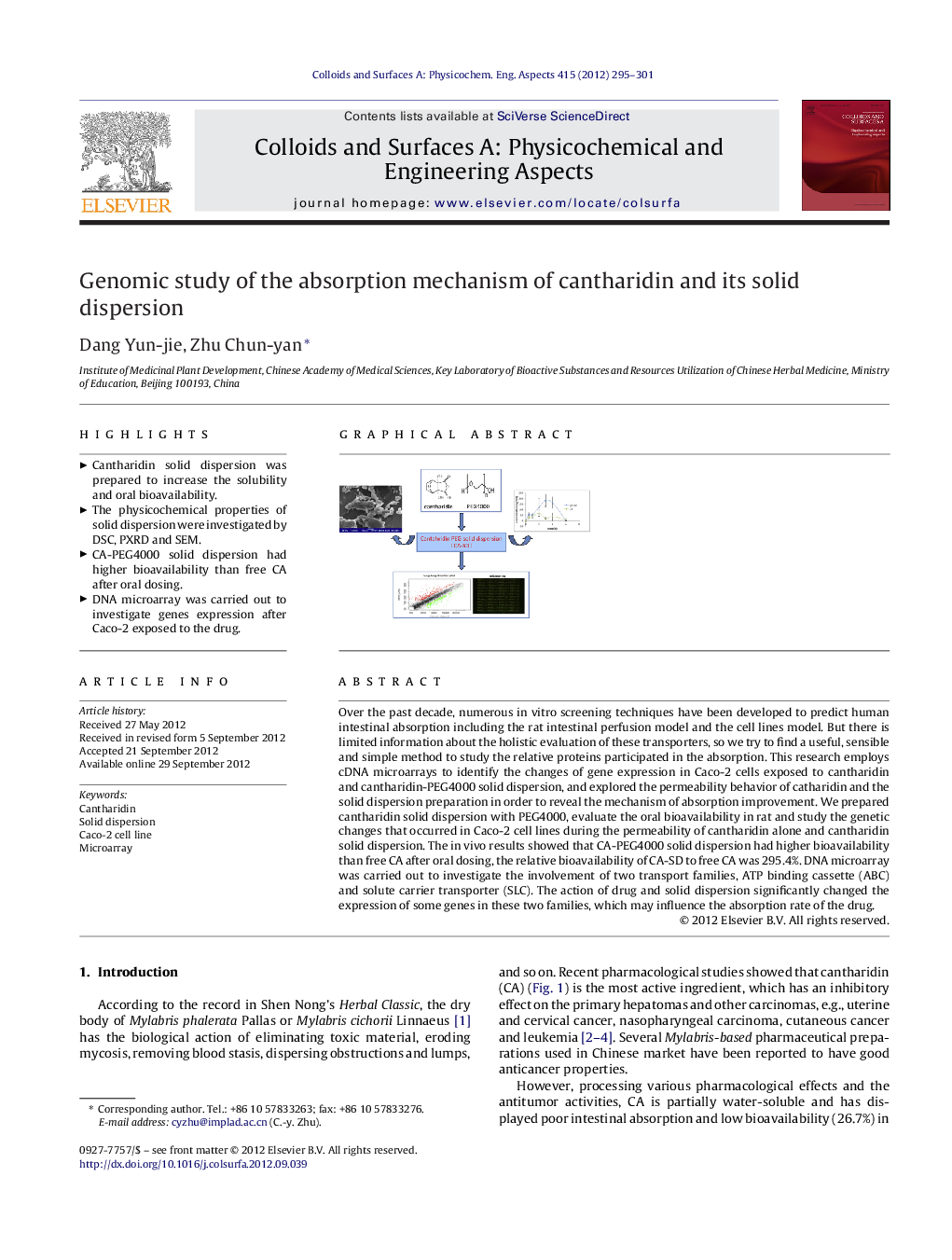| Article ID | Journal | Published Year | Pages | File Type |
|---|---|---|---|---|
| 593905 | Colloids and Surfaces A: Physicochemical and Engineering Aspects | 2012 | 7 Pages |
Over the past decade, numerous in vitro screening techniques have been developed to predict human intestinal absorption including the rat intestinal perfusion model and the cell lines model. But there is limited information about the holistic evaluation of these transporters, so we try to find a useful, sensible and simple method to study the relative proteins participated in the absorption. This research employs cDNA microarrays to identify the changes of gene expression in Caco-2 cells exposed to cantharidin and cantharidin-PEG4000 solid dispersion, and explored the permeability behavior of catharidin and the solid dispersion preparation in order to reveal the mechanism of absorption improvement. We prepared cantharidin solid dispersion with PEG4000, evaluate the oral bioavailability in rat and study the genetic changes that occurred in Caco-2 cell lines during the permeability of cantharidin alone and cantharidin solid dispersion. The in vivo results showed that CA-PEG4000 solid dispersion had higher bioavailability than free CA after oral dosing, the relative bioavailability of CA-SD to free CA was 295.4%. DNA microarray was carried out to investigate the involvement of two transport families, ATP binding cassette (ABC) and solute carrier transporter (SLC). The action of drug and solid dispersion significantly changed the expression of some genes in these two families, which may influence the absorption rate of the drug.
Graphical abstractFigure optionsDownload full-size imageDownload as PowerPoint slideHighlights► Cantharidin solid dispersion was prepared to increase the solubility and oral bioavailability. ► The physicochemical properties of solid dispersion were investigated by DSC, PXRD and SEM. ► CA-PEG4000 solid dispersion had higher bioavailability than free CA after oral dosing. ► DNA microarray was carried out to investigate genes expression after Caco-2 exposed to the drug.
